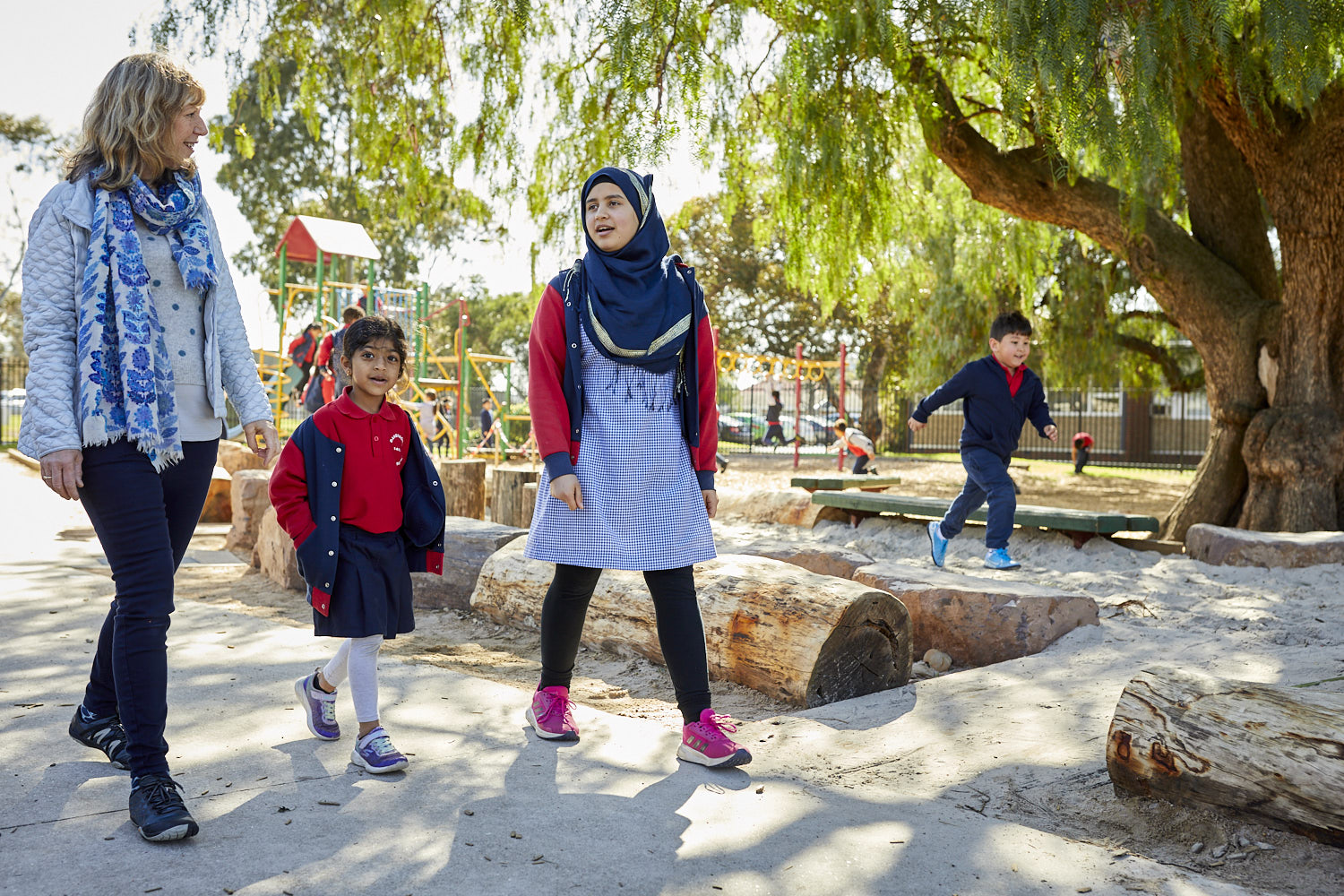On this page
Download this Fact Sheet:
Fact Sheet: Help-seeking for children and young people in schools (223.1 KB, PDF)
What is help-seeking?
Help-seeking is a positive coping strategy. It could mean asking for or seeking assistance with day-to-day events such as learning experiences, and relationships (e.g., negotiating with peers on a task, managing anxious feelings or relationship breakups).It could also mean seeking help for developmental queries or general health matters, including mental health and wellbeing. Examples include speech and language challenges, understanding puberty, navigating relationships or behavioural challenges.
Help may come in many shapes and forms. It could come from within the learning community or from external agencies, resources and organisations.
It may occur through daily interactions and conversations between educators, children and young people, and their friends, families and community. Other good sources of information and support are brochures, fact sheets reputable websites, and health professionals.
Support may be focused on the children and young people, their families or the school, or a combination of both. The goal in providing support is to find the best possible pathway to maintain or improve the wellbeing of children and their families.
Why is help-seeking important?
Seeking help is important because it can foster children and young people’s mental health and wellbeing.
There are a range of influences and experiences – both positive and negative – that impact on an individual’s mental health. These influences and experiences are known as risk and protective factors. Risk factors increase the chance of experiencing mental health challenges, while protective factors help support mental health and wellbeing. For example, family conflict can be a risk factor, while supportive family relationships can be a protective factor.
Being able to ask for or seek help can act as a protective factor for young people and children because it can:
- lead to accessing resources that support mental health and wellbeing
- build a sense of agency and confidence that they can influence their world and receive help if needed
- empower children and young people to access available support in the future
- buffer the impact of risk factors that challenge a person’s mental health and wellbeing.
The earlier individuals can access support, the better. Issues that aren’t addressed can become more difficult to manage, continuing to affect the child or young person as they grow.
Educators play an important role by:
- supporting children, young people and families and communities to develop positive attitudes about help-seeking
- empowering children, young people and families to reach out for support when necessary
- being aware of their school’s policies and procedures on supporting children and families
- role-modelling help-seeking behaviours.
Be You Professional Learning
Learn more about risk and protective factors in the Understand module of the Mentally Healthy Communities domain.
Learn more about observing children and young people’s behaviour; inquiring sensitively about your concerns; and providing support for children, young people and their families, in the Early Support domain.
What promotes help-seeking?
Recognising and describing emotions
Supporting children and young people to recognise and describe their emotions builds help-seeking confidence. Instilling positive beliefs and attitudes about accepting support empowers children and young people to recognise when help is required and seek assistance when needed.
Relationships and role modelling
Educators are well-placed to promote help-seeking. Children and young people tend to approach someone they know and trust as a first step in help-seeking.
Educators who engage in positive relationships and who are role models for help-seeking can encourage children, young people and families to reach out.
It's also important for educators to look after their own mental health and wellbeing.
Clear systems and referral pathways
When learning communities have clear systems and referral pathways in place, including online supports and communicate these to children, young people and families, it encourages help-seeking.
Children, young people and families who have positive experiences of support, and who are confident the person they reach out to will know how to support them, are more likely to seek assistance in the future.
Maintaining boundaries
In conversations where help has been sought, it’s important to refer only to what is known, noticed or observed without mentioning any label or diagnosis. You can use the BETLS Observational Tool to help guide you.
It is important to follow your learning community’s policies and procedures and involve the leadership team or wellbeing representative, as necessary.
Where young people self-refer for support (for example, seeking help from their teacher), the following considerations help maintain boundaries:
- Have clear policies and procedures in place, including guidance on parental consent.
- Provide different ways to seek help, including suggesting reliable sources of digital and web resources.
- If required, talk to young people about the limits of confidentiality. For example, if their circumstances raise safety concerns, you may need to notify another adult or family member to keep them safe. (Refer to your school’s policies and requirements on confidentiality if you need to know more about the limits of confidentiality).
Be You Resources
Learn more about Preparing for difficult conversations.
Be You Professional Learning
Learn about inquiring sensitively into a child’s circumstances in the Early Support domain.
-
Bibliography
Gulliver, A., Griffiths, K.M., and Christensen, H. (2010) Perceived barriers and facilitators to mental health help-seeking in young people: a systematic review, BMC Psychiatry 10, Accessed 27 August 2019: https://bmcpsychiatry.biomedcentral.com/articles/10.1186/1471-244X-10-113
Lawrence D, Johnson S, Hafekost J, Boterhoven De Haan K, Sawyer M, Ainley J, Zubrick SR (2015) The Mental Health of Children and Adolescents. Report on the second Australian Child and Adolescent Survey of Mental Health and Wellbeing. Department of Health, Canberra.
Rickwood, D.J., Deane, F.P., and Wilson, C.J. (2007) When and how do young people seek professional help for mental health problems? Accessed 27 August 2019: https://www.mja.com.au/journal/2007/187/7/when-and-how-do-young-people-seek-professional-help-mental-health-problems
-
External links
ReachOut Breaking down barriers to help-seeking
ReachOut What happens when I call a helpline?
